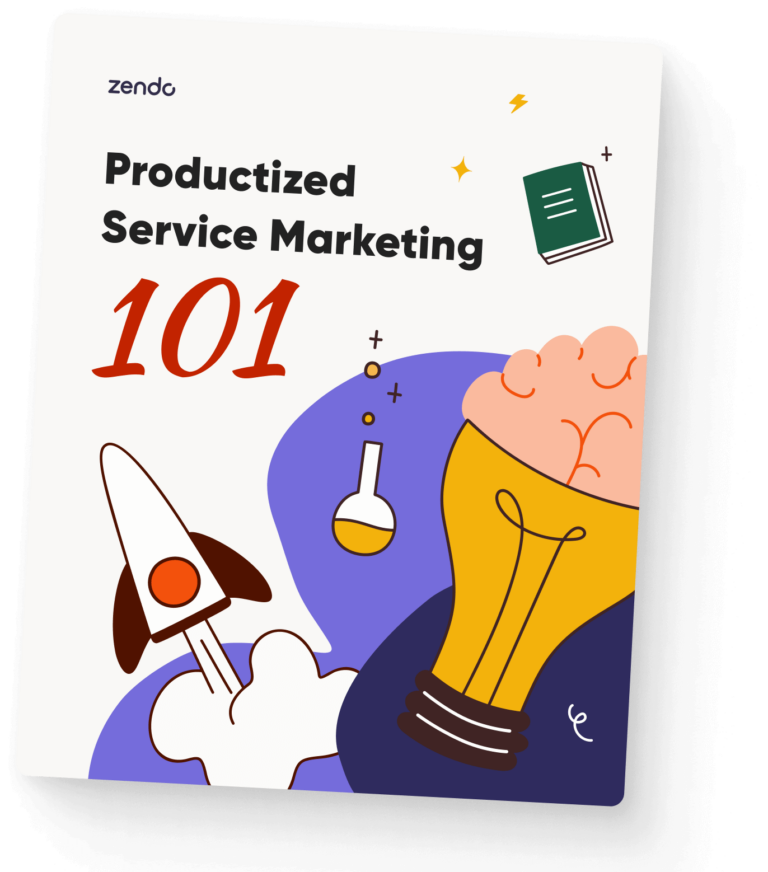The golden age for solo entrepreneurs and small businesses is staring right into our faces. Thanks to globalization and the widespread use of the internet, running your own business has never been easier. And the abundance of content encouraging to start your own businesses convince lots of people to do just that; and to do that well, you need excellent organizational skills to keep up with all your clients, team members, and third–party vendors.
To help out with that, many business management solutions showed up on the market, offering automation, digital signatures, proposal and contracts templates, billing and invoicing, and so much more. Two of such solutions we’ll describe in this Plutio vs Dubsado article, with a bonus right at the end.
Plutio: Trello on Steroids
Plutio is a business management software created in 2015 by Leo Bassam, who, as a freelancer himself, was struggling with his web design business. Not for the lack of skills, mind you, but because of too many tasks expected from a one–man army that freelancers tend to be. Managing projects, marketing, client communication, and finances simultaneously must have been exhausting.
You’d think there would be technology to help out with that. Unfortunately, most tools of that time were geared towards teams and not lone wolves. So like many founders, Leo was forced to develop his own.
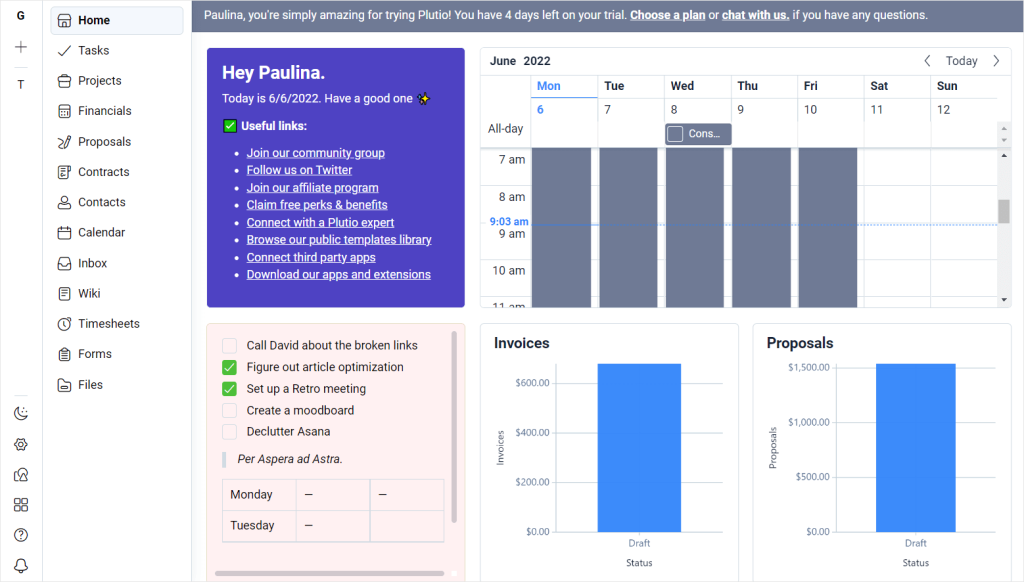
How to describe Plutio? It’s an all–in–one solution that’s main goal is to restrict the number of used applications. In the ideal scenario, it should be the center of operation for small and midsize businesses, who can manage all their projects from start to finish, from assigning tasks to collecting invoices and data analysis.
Most interestingly, many fans of Plutio found it after searching for Trello alternative, which can be easily outgrown once your business takes off (as stated by the G2 reviews). The lack of necessary features — like time tracking, synced calendars, or templates — become a pain point that forces its users to switch platforms.
Additionally, Plutio doesn’t have a specific target audience beyond the size of your business. It’s a universal tool that doesn’t favor one industry over another.
Dubsado: Productize Everything!
Dubsado’s origin story isn’t all that different. A married couple, Jake and Becca Berg, were also looking for solutions to improve the internal processes of their photography business. Having no luck with that, they’ve used their skills to develop a tool for their own use. Once the number of its features grew big enough, they realized that it has a potential to change lives of many freelancers similar to them. So they started selling it.
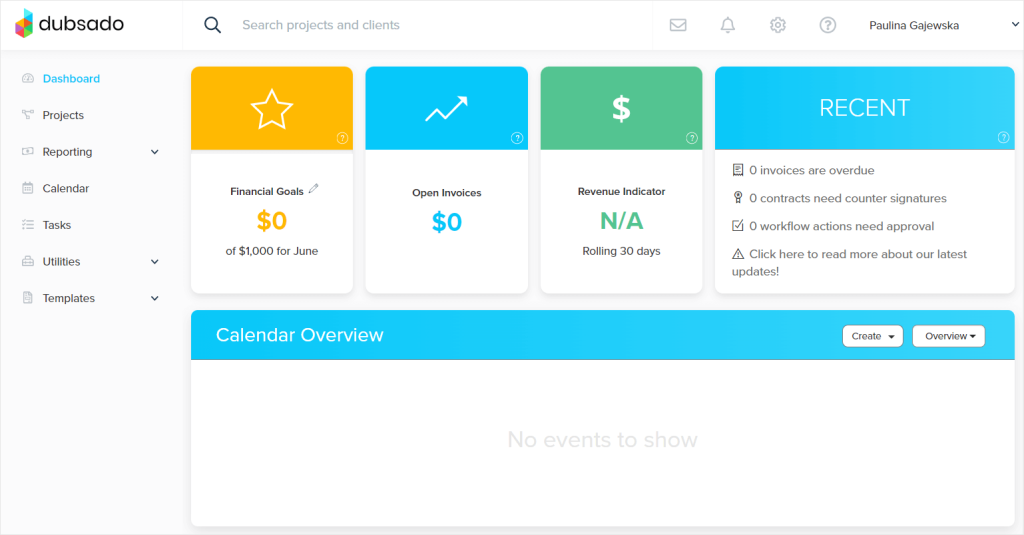
Dubsado is specifically marketed towards creative solo entrepreneurs who dabble in photography, event organization, wedding planning, graphic design, content writing, and so on. These professionals can count on Dubsado to arm them with industry–related resources, such as templates or forms.
Moreover, Dubsado encourages small business owners to productize their services, i.e. to strictly define the scope of the service and allow clients to pay for it upfront. So for example, instead of settling up for a vague, completely bespoke logo design service, a designer can create a package consisting of a specified number of version, revisions, and smaller optional add–odds that can sweeten the deal, along with discounts.
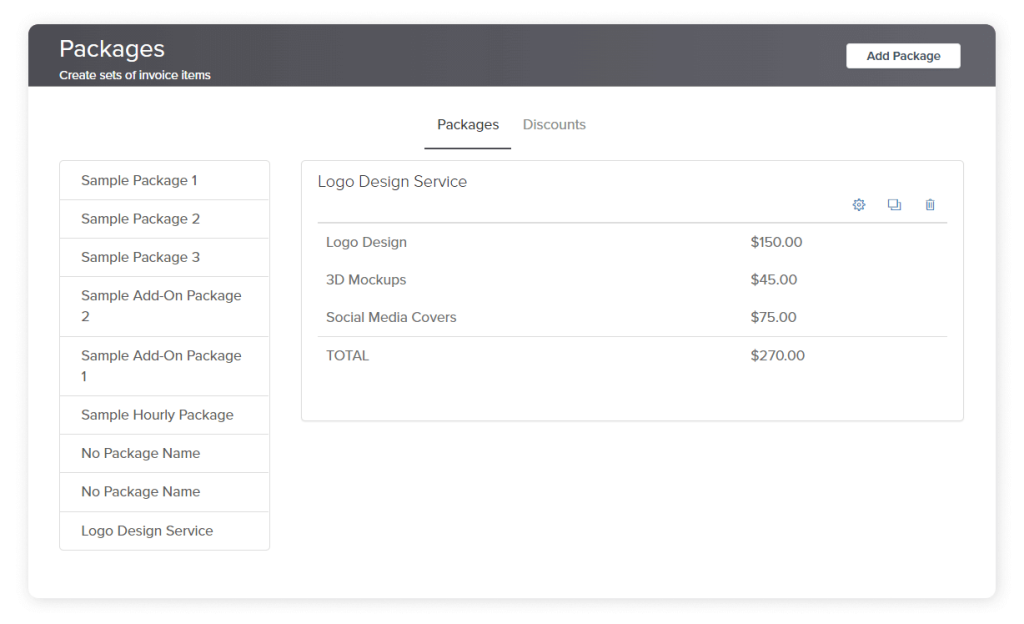
Dubsado’s main competition is HoneyBook, 17Hats, and Zendo.
And now that we’re done with introductions, let’s compare these two customer relationship management systems side–by–side.
UX/UI & Interface
TLDR: Dubsado has better looks, but Plutio offers more customization options.
Let’s not kid ourselves — Plutio is the older platform of the two and it shows. It cannot be described as sleek or modern, but it’s definitely clear and simple. Everything you need can be found on the left side, from settings to features and help center, while the right side is meant for your dashboards. All in all, while not exactly pleasing to the eye, the user interface is friendly enough.
The one thing that makes Plutio stand out is customization. The sheer number of possibilities is pretty much endless. There are no three or four color options you might expect — instead, you have full control of how your interface looks, from page background to buttons, notes, headers, utilities, and so on. Moreover, you can set the colors with RGB codes, giving you access to all the color hues possible.
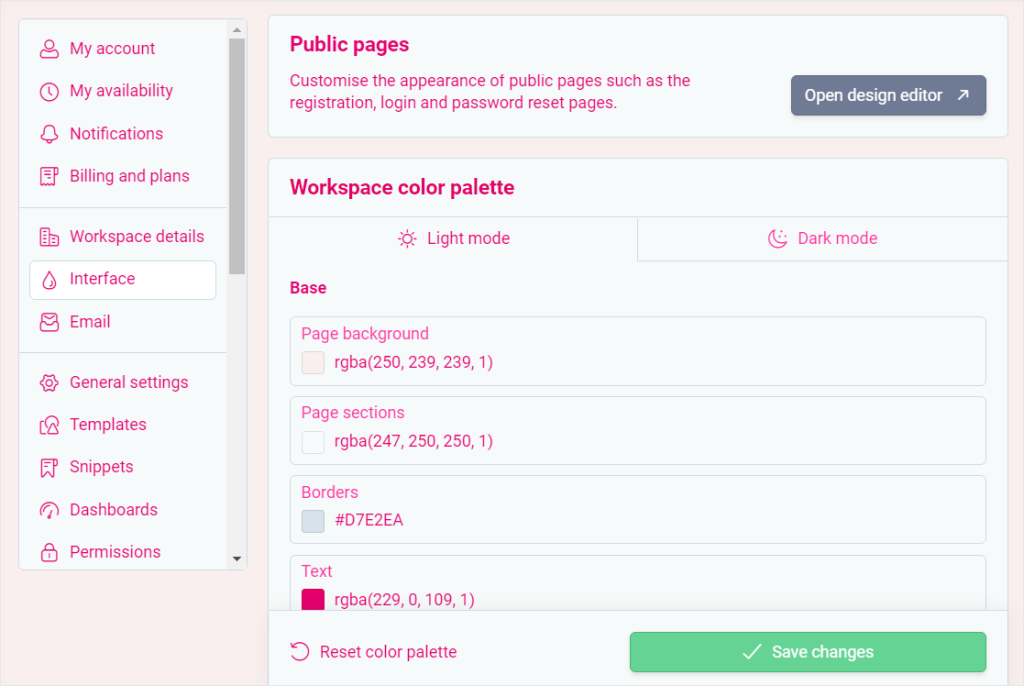
The downside to this creative freedom is that it’s actually hard to come up with a good design — unless you’re a graphic designer yourself. Our advice is to look up interfaces of other users or to limit yourself to just a few tweaks.
More importantly, you can customize the default menu so that it shows only the features you actually need.
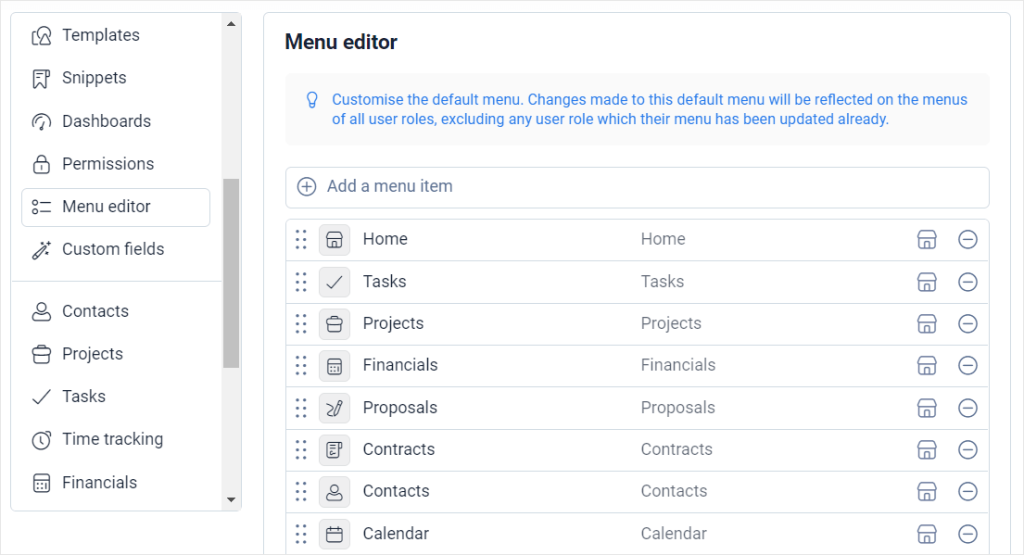
Dubsado comes with a much more pleasant, modern look. It’s similar enough to Plutio in the sense that all the features are on the left side and your dashboard on the right, with the exception of inbox, notification, and settings, which can be found in the top right corner.
When it comes to customization, you can’t do much. All Dubsado allows you is to change the dashboard’s color scheme, which is only limited to certain elements.
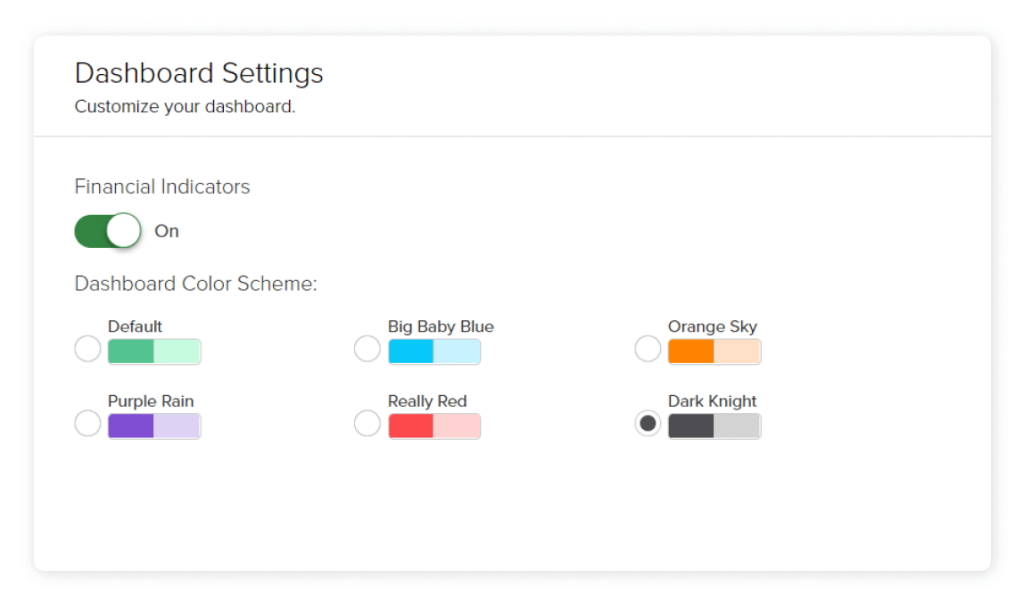
Overall, Dubsado doesn’t stray much from the UX/UI best practices, but there is one big downside — the number of features.
Entry Level
TLDR: Dubsado is more difficult to learn than Plutio.
While Dubsado looks easy enough to get the hang of, it couldn’t be farther from the truth. The more time you spend on the platform, the more questions you have — and that’s the fault of the overwhelming number of features, which are, more often than not, connected to automation.
One of Dubsado’s killer features is the workflow. It basically enables you to create automated processes moved along by the triggers. So for example, if a client contacts you for the first time, you can automatically send an introductory email with a premade questionnaire form. Or, once the payment gets processed, the specific project will change its status and move along the sales pipeline.
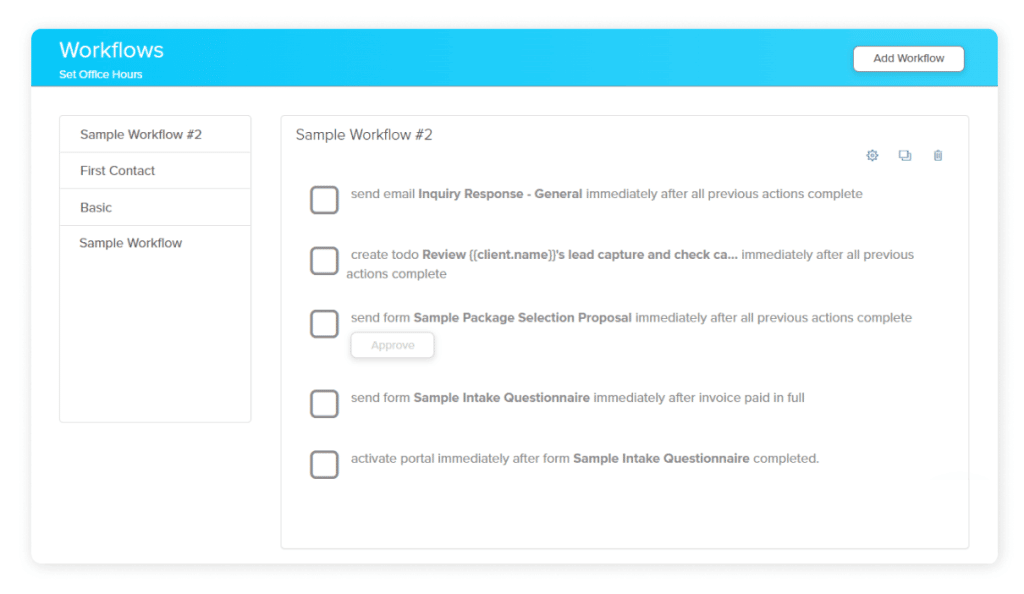
While that sounds amazing, it’s very hard to set it right. For many, workflows are the most confusing part of Dubsado. It requires from you several things: you need to know the behavior of your clients, have structured processes of your own, and prepare all the materials in advance. It’s best to test your workflows thoroughly, for any mistakes on your part might lead to disastrous results — like your clients getting the wrong message or even contracts, giving them a bad impression of you.
If you don’t know how to set your workflows properly, you can either get inspired by those of other people, or hire a professional (NF) to set it up for you.
Also, if you’re switching to Dubsado from a service automation platform, sales automation platform, or a marketing automation suite, you can count on the Dubsado team to offer you free data migration assistance.
So far, Plutio doesn’t have similar features — everything has to be done manually, but at the same time, the risk of making a mistake is lower. This also makes Plutio easier to learn, although to fully make use of its potential, you’ll also need to spend some time.
Task Management
TLDR: Plutio gives you more options, but Dubsado allows you to automate your tasks more.
The most basic feature of any business management solution is task management. Let’s see what can be done with the tasks on both these platforms:
| Dubsado | Plutio | |
| Comments | ✔️ | ✔️ |
| Attachments | ✔️ | ✔️ |
| Subtasks | ❌ | ✔️ |
| Set a reminder | ❌ | ✔️ |
| Show on calendar | ✔️ | ✔️ |
| Assign a task board | ✔️ | ✔️ |
| Assign a project | ✔️ | ✔️ |
| Assign an assignee | ✔️ | ✔️ |
| Time tracking | ❌ | ✔️ |
| Recurring tasks | ❌ | ✔️ |
| Create task via email | ❌ | ✔️ |
| Create task via template | ❌ | ✔️ |
| Custom fields | ❌ | ✔️ |
While it appears that Plutio has richer task management, Dubsado still has an ace up its sleeve in the form of automation — you can include your tasks into your workflows. This way, you can also circumvent the lack of reminder by creating it directly in the workflow.
Project Management
TLDR: Plutio helps teams work together on a project, while Dubsado can help automate internal processes.
| Dubsado | Plutio | |
| Project sources | ✔️ | ❌ |
| Project breakdown | ✔️ | ❌ |
| Custom project statuses | ✔️ | ✔️ |
| Custom project tags | ✔️ | ❌ |
| Billing based on time tracking | ✔️ | ✔️ |
| Invoices | ✔️ | ✔️ |
| Recurring invoices | ✔️ | ✔️ |
| Calendar | ✔️ | ✔️ |
| Attachments | ✔️ | ✔️ |
| Team conversations | ❌ | ✔️ |
| Knowledge base | ❌ | ✔️ |
| Multiple views | ❌ | ✔️ |
| Progress bar | ❌ | ✔️ |
How do both these platforms compare when it comes to project management?
Dubsado definitely gives you more of a holistic view of your sales pipeline, from capturing leads to archived projects. In the Reporting section you can find many useful charts, which can show you what works and what doesn’t in your business. For example, you can discover which projects weren’t that profitable in the end or where you’ve wasted your time unnecessarily. Having all that real data can help you make better decisions for your business.
Plutio doesn’t have such rich analytic tools, but it has something else — a much better environment for teamwork. Each project comes with a “Conversation” tab, where team members can communicate with each other quickly and efficiently. The biggest benefit to that solution is that the most important conversations happen on the platform and not outside of it. This means that everyone can easily keep up with the current ongoings of the project and no crucial information gets lost.
Payment & Invoicing
TLDR: Both platforms allow you to create your own payment plans, but Dubsado additionally comes with pre–made templates.
Many businesses come with different payment methods — some require payment upfront, some agree on milestones, and others wait till the last minute to send an invoice. Can these two platforms cater to all these needs?
Plutio allows you to send invoices any time you need, with the option to create subscription plans for recurring payments. Plutio is integrated with Square, Stripe, and Paypal, but your client can also process payments directly through their bank account. The lack of constrictions gives you lots of flexibility in how you shape future collaborations.
Dubsado offers you such freedom as well, but it goes one step further and arms you with pre–made templates for payment plans: Pay in Full, Fixed, Deposit, 50/50, and Three installments. If that doesn’t satisfy your needs, you can create your own template, which will save you time in the future.
Subscription Plans
TLDR: Plutio is more expensive, but it’s also more beneficial for businesses with big teams.
Dubsado comes with two plans: Starter ($20 per month and $200 per year) and Premier ($40 per month and $400 per year), which offers better automation and Zapier integration.
Surprisingly, Plutio is the more expensive option. It offers four plans: Solo ($19 per month, limited to 3 clients), Studio ($39 per month, up to 10 contributors), Agency ($99, white–label included), and Enterprise (estimated individually with an account manager and custom onboarding).
To learn more about how much exactly these two tools cost, we’ve prepared in-depth articles that not only sum up all the expenses, but also analyze the overall value you get. Please enjoy our Plutio Pricing and Dubsado Pricing articles!
Introducing The Best Client Requests Management Software
Before you choose a winner in the Plutio vs Dubsado debate, consider a new, cost–effective alternative, which had time to learn from the mistakes of its competitors — Zendo.
It’s an elegant, simple client portal which wows its users with its sleek and modern user interface. Thanks to purposeful design, it’s so intuitive in use that it doesn’t require external consultants to have it up and running. In the age where people feel too overwhelmed by the number of applications, such low–maintenance solutions are more preferable by teams.
Instead of tasks and projects, Zendo has requests. By default, they’re not created manually by the team members (although they can be), but by clients, who go to your Service Catalog, choose the service they’re interested in, and fill out the Order Form. The request will land in Zendo, where the team will take care of it.
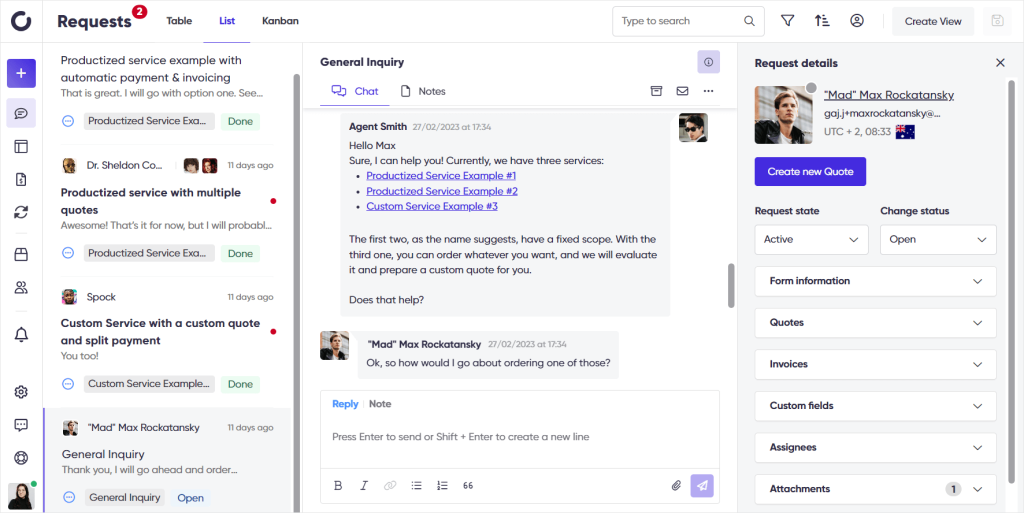
The major difference between Zendo and its competitors is the chat, which serves as the main channel of communication between the team members and the client (similarly to customer service tools). But it’s not a typical chat — it’s your center of operations where you can send quotes, payment reminders, issue invoices, and finalize payments. That’s right; you can prompt clients into paying and they can do so with just a few clicks without switching to another app, or even tab. Every major action happens inside your requests. This gives you one source of truth and you know exactly what happened during each transaction.
The way you can manage your offered services and requests is nothing to scoff at, either. First, you create a Service, which can be productized, custom, subscription-based, or free. In case of a productized service, you create a list of items that can be made obligatory or set as add-ons. Also, you can allow your clients to decide on the quantity for each item within a specified range.
When it comes to subscriptions, you can create different variations with packages to not only spice up your offer, but also to help clients adjust the service to their needs. You can set up various billing cycles — weekly, monthly, quarterly, and yearly — as well as offer a free trial for the duration of your choosing. This way, you can ensure stability and predictability of your revenue.
For each Service, you can decide on the amount of automation it should have. For example, you can decide when a payment request should be sent or an invoice issued.
And of course, you can assign a Workflow for your Service. Workflows define what happens after a Request has been made by your client. With the help of customizable Statuses, you define each step of the service delivery process (“Paid”, “Evaluating”, “In Progress”, “Waiting For Approval”, etc). Not only does it help in giving your process a structure, but it also lets your clients and teammates know the state of the Request (although you can also make Statuses invisible to clients). It’s worth noting that the process isn’t strict — you can jump between Statuses however you want, giving you greater flexibility.
And with the help of Triggers, you can automate your Statuses. For example, if your current Status is “Waiting For Payment” and your client has just paid, the Status can automatically change to “Paid”. Because of that, you don’t have to remember to do the switch manually.
Last but not least, Zendo is immensely cost–effective. In fact, the Starter plan costs nothing at all. It’s entirely free while giving you access to most features (excluding the white label features), with the only limit being that it only has two seats available. For more seats, you’ll have to switch to the Growth plan ($19 per agent, per month, billed annually and up to 100 agents), or jump right into the Enterprise plan (custom evaluation, unlimited number of agents).
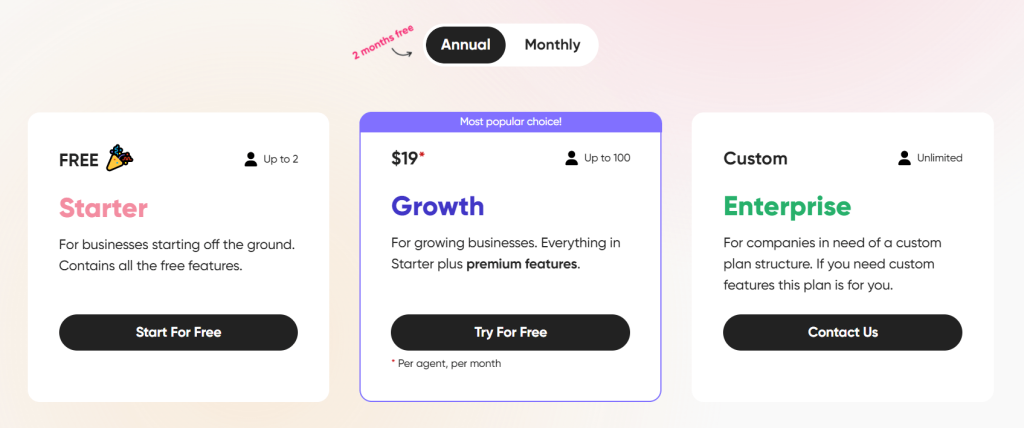
Plutio vs Dubsado: Conclusion
The market is filled with tools ready to change the way you run your business. The problem is, no business is the same. Each will deal with different problems and challenges. That’s why it’s so important to test the tools for yourself and see what best fits your needs — after all, you shouldn’t have to adjust your business to a tool, but the other way around. So don’t delay the inevitable and sign up for Zendo’s free trial!

A free online training. Delivered daily to your inbox to grow your productized agency.
What Is Plutio?
Plutio is an all-in-one tool for managing your business. It helps entrepreneurs create project and task management systems, schedule meetings, craft proposals, contracts, and agreements, as well as time track projects, issue invoices, and collect payments. Plutio is well-known for its rich customization options, where you can tailor the experience from top to bottom to your needs. Thanks to that, you can create personalized Client Portals, a dedicated space for your clients to look up and manage their projects.
What Is Dubsado?
Dubsado is a Business Management Solution to help creatives with the administrative side of running a business. It makes it easy to collect payments, create personalized and branded documents that can be automatically sent to clients when triggered by another action, and spoil your customers rotten with their own Customer Portal. Dubsado is especially famous for its automation feature, where you can create complex chain reactions to optimize your internal processes and free up your time.
Who Is Dubsado Best For?
Dubsado is best for creatives, such as photographers, wedding planners, or graphic designers, who’d make use of the premade templates. Also, considering the fact that Dubsado wasn’t created with teams in mind and doesn’t offer team-oriented features, it should be used by lone wolves who care about growing their business, but not their team.
What’s Better Than Dubsado?
If you’re looking for something better than Dubsado, consider Zendo, a universal solution to modern business problems. Its main strength lies in supporting teamwork through roles & permission levels, modern chat experience, and the impersonation option, where you can temporarily take over another user’s account. It promotes transparency and a sense of trust, while ensuring at the same time that everyone has every single piece of information close at hand at all times.










